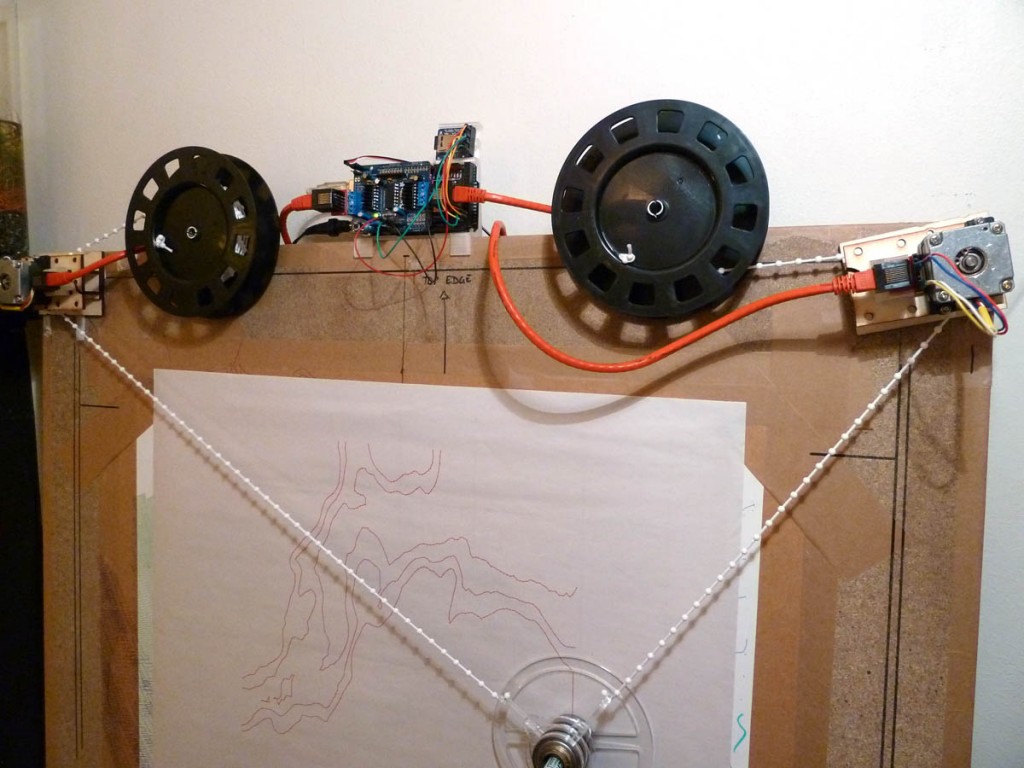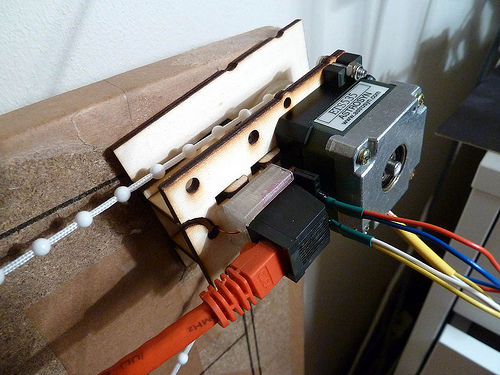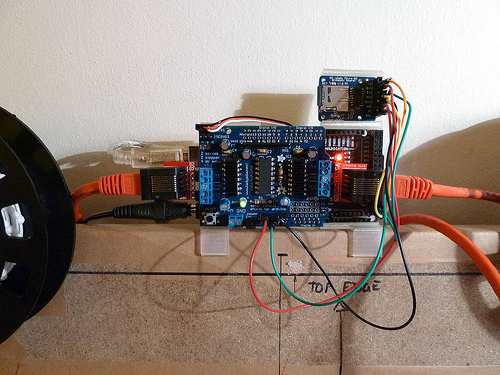How futuristic does this look.
Well ok, maybe not futuristic. But this is a new counterweight replacement, it uses spring-loaded take-up spools from a retractable washing line. These have power springs in them (like metal tape measures).
The second new thing is using RJ45 network cables as motor power leads. This is basically a way of getting cheap extension leads I don’t have to make up myself. Making up the cables was the really onerous bit about kitting, so this is the solution to that, as well as probably being more reliable.
The connections are very neat, and the cables are very affordable, and the extra conductors means that it’ll be quite easy to piggy-back endstop detectors on the same cable.
I’ve used the little sparkfun breakouts with 90 degree pin headers to connect into the screw terminals on the motorshield. The network cables are a lot stiffer than the old ones, so I’m a bit worried about the strength of the connections, but I’m pretty pleased with it.
Now, shepherds pie and carrots for dinner – rock on.




Awesome, I was trying to come up with a similar idea of my own to make my machine more portable.
My only problem with that, is usually Cat5 or Cat6 cables have 24 AWG wire. I think that’s too close to the draw rating on the stepper motors. You should be fine, but I didn’t want to chance anything, especially if I leave my machine unattended for hours on end
Yes it is a bit close to the knuckle for that (that was the controversial aspect to the post that I forgot to mention), for all it’s neatness I don’t think it’s a one-stop solution for new kits. So sad.
–Edit
I forgot until just now, that the reason I’d decided that the network cables would be ok was that the leads that come out of the stepper motors are 26AWG anyway. I don’t know an awful lot about EE, but I think this might be an issue for longer runs of cabling. My calculations suggest a voltage drop of just over a tenth of a volt over a four foot cable, and I don’t think that represents enough power dissipation in the wire to be concerned with. The dream is back on!
I will admit, I’ll probably go this route once I can figure out my stepper glitch problem. I really need something that I can pack up in a hurry if I want. Or, I may go the route of a 4 conductor remote control car style connector.
I do like the ability to use any old Cat5/6, and be able to scale it to any length if/when needed. Perhaps I’ll put a meter on my leads and actually measure the max current draw, just to ease my mind
Nice job!
Where’d you get the new counterweight replacements?
The spools are inside this: http://www.argos.co.uk/static/Product/partNumber/8501240.htm and the brackets for the spools are made from http://www.thingiverse.com/thing:18801 and a bit of 10mm aluminium tubing from B&Q.